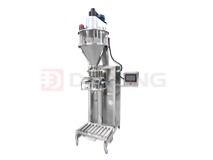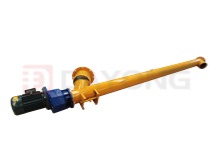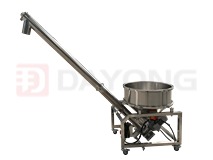Rotary vibrating screen is a commonly used screening equipment, which is widely used in materials screening, grading, removing impurities and other processes in the construction industry. Here are a few applications of rotary vibrating screens in the construction industry:
Sand screening: The sand and gravel materials commonly used in the construction industry need to be screened to meet the needs of different particle sizes. The rotary vibrating screen can be used to screen and classify sand and gravel materials to separate sand and gravel particles that meet the requirements. At the same time, the rotary vibrating screen can also remove impurities in the gravel and improve the quality of the gravel.
Cement production: The rotary vibrating screen can be used for material screening in cement production. For example, in the production process of cement raw materials, limestone, clay and other materials need to be screened to separate the material particles that meet the requirements and ensure the quality of cement.
Concrete Production: In the process of concrete production, the aggregate needs to be screened to meet the strength and quality requirements of the concrete. The rotary vibrating screen can be used for sieving and grading the aggregate to separate the aggregate particles that meet the requirements and remove impurities and dust.
Construction waste treatment: Construction waste often contains useful bricks, steel bars and other materials, which can be separated and recycled by rotary vibrating screens. The rotary vibrating screen can be used to screen, classify, remove impurities and other processes for construction waste, reduce waste disposal costs and improve resource utilization.
In short, the rotary vibrating screen has a wide range of applications in the construction industry, and is often used in sand and gravel screening, cement production, concrete production, construction waste treatment and other processes. When using a rotary vibrating screen, it is necessary to select appropriate parameters such as screen aperture, amplitude and vibration frequency according to the material properties and screening requirements to ensure the best screening effect and productivity.





 (Live chat)
(Live chat)
_213x160.jpg)




 +86-15136770681
+86-15136770681 sale@vibratingscreen.cc
sale@vibratingscreen.cc +86-373-3669006
+86-373-3669006 From West Room 5, 1st Floor, Building 18, Huilong Yangguang Mingyuan, New District, Xinxiang, Henan, China (Mainland).
From West Room 5, 1st Floor, Building 18, Huilong Yangguang Mingyuan, New District, Xinxiang, Henan, China (Mainland). Your Position:
Your Position:



